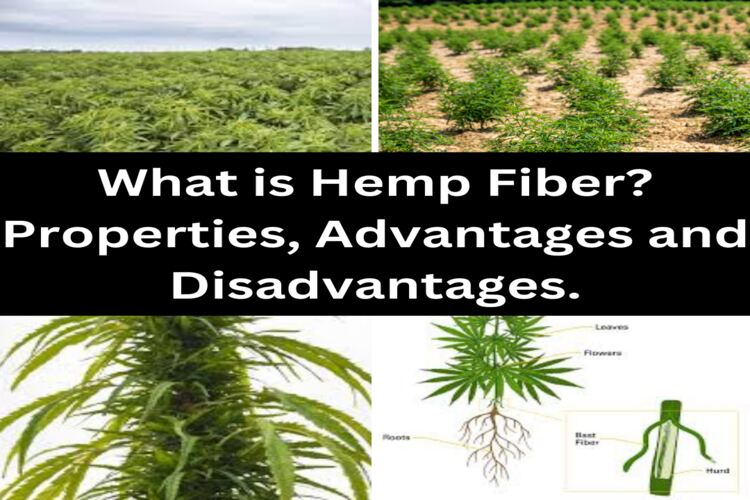What is Hemp fiber?
Hemp is an eco-friendly crop that provides valuable materials for industry. It used to be harvested for textiles when in full bloom, but now it’s mainly collected at seed maturity for various uses. Despite a thriving market for hemp seeds and Phyto cannabinoids, the European hemp fiber market is stagnant. To boost hemp fiber growth sustainably, we must optimize farming practices, choose the right plant types, and enhance post-harvest processing. This will enable continued industrial use, broaden textile fiber applications, and increase its value in high-end products.
Properties of Hemp Fiber
- Antibacterial Properties: Hemp fiber has natural antibacterial abilities, which are useful in things like clothing and personal care items.
- Strength and Durability: Hemp fiber is very strong, making it great for tough applications. It’s even stronger than other natural fibers like cotton fiber and bamboo.
- Temperature Control: It helps control temperature by keeping you warm in the cold and comfortable in the heat.
- Sun Protection: Hemp fiber is great for outdoor items like ropes, canvas, and protective clothing because it can withstand UV rays and provide sun protection.
- Eco-Friendly Biodegradability: Environmentally friendly because it’s fully biodegradable, reducing its impact on the environment and promoting sustainability.
- Moisture Control: Hemp fiber is great at keeping you dry and comfortable in different weather. It also helps prevent bacteria growth and keeps odors away.
Harvest and Processing
When harvesting grain, it’s best to start when the seeds start to shatter. At this point, around 70% of the seeds will be fully mature, and the rest of the plant will still be green. It’s better to keep the grain’s water content below 20%, even though it can go over this mark. Many recommend using grain combines for harvesting, with settings similar to grain sorghum. However the long stems can be a challenge, so some use PVC pipes to prevent entanglement. To improve the process, keep the header high to reduce the amount of stem going through the combine. Dry plants can create a fire hazard due to dust. To reduce this risk, move the grain at low auger speeds or use conveyor belts. Proper methods for harvesting, processing, transportation, and storage are crucial for grain crops, including hemp, to prevent spoilage and get the best value. Hemp grain is delicate and needs careful handling during harvest, storage, and transport. Use a grain drying facility, and start drying within 1.5 hours of harvest. Keep the grain temperature below 100°F to avoid overheating. Hemp grain contains 29-34% oil, with 15-25% of it being alpha-linolenic acid, similar to flax but with less oil and alpha-linolenic acid content. For fiber production, cut hemp between early bloom and seed set when lower leaves are yellow. Windrows are baled at 12% moisture and then processed to separate bast and Hurd fibers. Bast hemp fibers are concentrated in the “bark” of the stem, while shorter hard fibers with more lignin are found in the rest of the stem. Wider diameter stems are preferred for fiber. You can use a multi-cut combine or separate passes for grain and fiber harvesting.
Traditionally, hemp was left in the field for up to five weeks after harvesting for a process called dew retting, which breaks down the fibers. However, this method depends on the weather and can affect fiber quality negatively. An alternative to dew retting is water retting, which requires a lot of clean water that should be treated before being discharged. Another approach gaining popularity is mechanical fiber separation, which doesn’t require retting, or potentially using an enzymatic treatment.
Advantages of hemp fiber
- It’s strong and not heavy.
- They don’t release harmful fumes when heated or burned at the end of their life.
- Hemp fiber is great for insulation and soundproofing.
- Hemp fiber is made from renewable materials and doesn’t need much energy to produce.
- It costs less to make than synthetic ones.
- Hemp fiber is safe for health.
- Less abrasive to processing equipment as much as synthetic fibers do.
Disadvantages of hemp fiber
- Fiber properties change a lot because of things like how they grow, how they’re harvested, and when they’re picked.
- You can make hemp fibers stronger with treatments, even though they’re not as tough as synthetic ones.
- Fibers can catch fire easily and get hurt by UV rays, germs, and fungi.
- Hemp fibers soak up water, making them swell and change shape.
- Aren’t as strong as synthetic fibers.
- The bond between the fiber and the material around it is often not very strong.
- There are fewer choices for the matrix because of the lower processing temperatures.
Uses of Hemp Fiber
- Paper: Hemp fiber has a well-established tradition in the papermaking industry. It’s renowned for producing top-tier paper known for its outstanding durability and archival characteristics.
- Textiles: Hemp fiber is a well-established and sustainable material with a wide range of applications, including clothing like shirts, pants, dresses, and various accessories.
- Automotive Industry: Hemp-based composites are under examination as potential alternatives for car interiors and components, presenting eco-friendly and lightweight options.
- Construction Materials: Hemp fiber is used in construction materials like fiberboards and insulation, promoting sustainable building practices. It also helps make biodegradable composites.
- Ropes and Cordage: Hemp fiber’s remarkable strength and resistance to wear and tear make it a popular choice for manufacturing ropes, twines, and cordage in diverse industries, including marine, construction, and agriculture.
You may also like:
- Explore The Different Types Of Textile Fibers
- Count of Yarn: Explanation and Varieties
- Structure and Properties of Cotton Fiber
- Kapok Fiber: Properties, Structure and Production Process
- What is Linen Fiber? Properties, Structure, and How It Made?
- What is Jute Fiber? Properties, Advantages and Disadvantages.
- What is Ramie Fiber? Properties, Advantages and Disadvantages.
- What is Sisal Fiber? Properties, Structure, and How It Made?
Share this Article!

